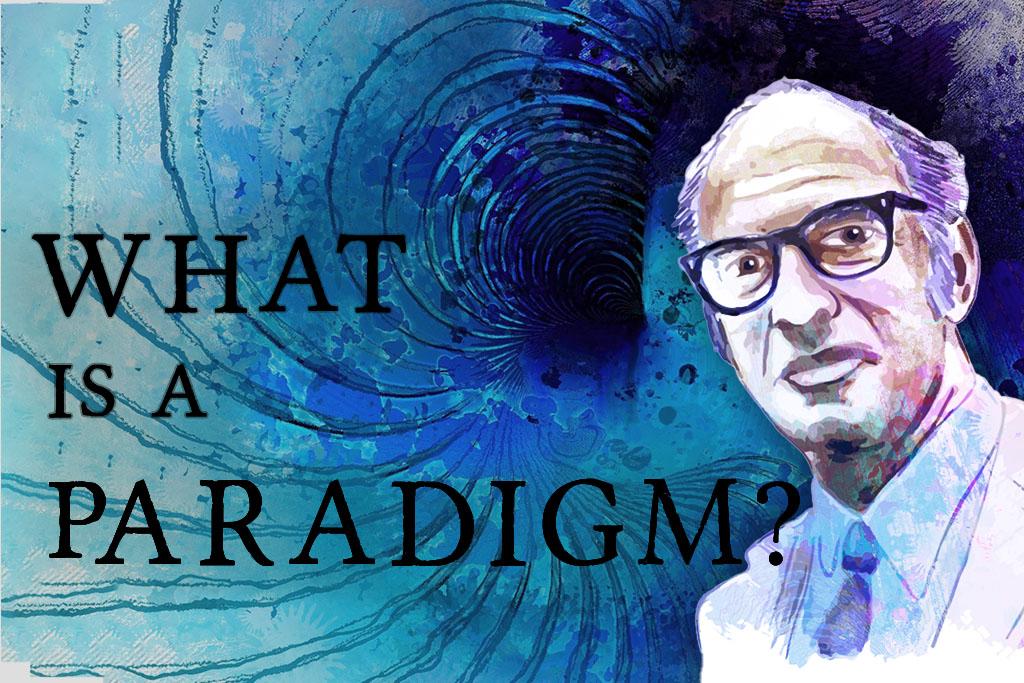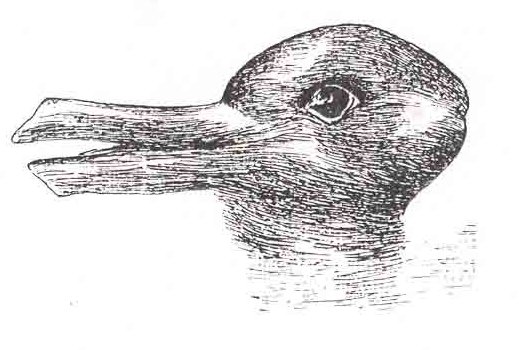



Thomas Kuhn’s work The Structure of Scientific Revolutions is one of the most referenced academic works in history and one of the most influential and controversial books of the 20 th century. Its release in 1962 triggered a hornet’s nest of activity in response.
In the book, Kuhn challenges all the traditional notions about how science progresses. In our post-Kuhnian world where the word paradigm is thrown around like hotcakes, it is difficult to appreciate just how revolutionary Kuhn’s reconception of science was.
The Structure of Scientific Revolutions saw Kuhn labelled as a relativist, an irrationalist, an anti-realist and perhaps most horrifying of all a postmodernist.
What’s interesting in Kuhn’s case is just how different his background is from the people usually entrusted with these labels.
In this article, we are going to look at the central idea of Kuhn’s work: the term paradigm. This term has attained a state of ubiquity that most buzzwords can only dream of; from the boardrooms of Fortune 500 companies to the circle sharing at remote hippy communes, the term has penetrated every layer of the culture.

Before we get into the term paradigm, it’s worth taking a moment to consider the traditional view of scientific progress. It is in contrast to this view that Kuhn’s term paradigm stands and so getting a clearer picture of what the term is distinguished from will give us a clearer idea of what he means by paradigm.
The standard view of scientific progression before Kuhn — and a view that still seems to hold more sway in popular culture — is the idea that science is a piecemeal cumulative process. The history of science on this view is seen a linear progression of slow and steady incremental refinement over the course of the past few centuries.
Science is growing closer and closer to capturing truth with a capital T in its theories. We already have most of the theory developed, the work of science now is just filling in the details — putting the final brushstrokes on the complete understanding of reality.
Kuhn of course, couldn’t disagree more. Having studied the history of science, Kuhn was struck by the contrast between the reality of scientific history and the narrative he and every other student of the sciences is given in their undergraduate courses and textbooks.
Rather than seeing the scientist as a heroic warrior of truth, Kuhn characterises the scientist as a puzzle-solver. The activity of science is more akin to doing a crossword or a chess puzzle in which the potential answer is already suggested by the context. Science doesn’t proceed by choosing great problems and trying to solve them but by taking already established knowledge and trying to move it forward one step.
Science then is less of a heroic endeavour than an army of puzzle-solvers each attempting to solve one of the many puzzles in their field. And this is where the term paradigm comes in because it is the paradigm that tells scientists where the puzzles are and what the solution looks like.
But what is a paradigm? After the publishing of the first edition of The Structure of Scientific Revolutions in 1962, one supporter of Kuhn observed that he had used the term in no less than 21 different ways and so with the publishing of the second edition in 1969, Kuhn added a postscript that deals more specifically with this question and which provides the most stimulating reading for the philosopher concerned with the epistemological and ontological implications of Kuhn’s work.
In this postscript divides the uses of paradigm into two core meanings.
The first definition tells us that a paradigm is what he calls a “Disciplinary Matrix”. Kuhn claims that science can succeed in making progress only if the relevant scientific community shares a strong commitment to their shared theoretical beliefs, values, instruments, techniques and even metaphysics. This constellation of shared commitments is what Kuhn means by the term Disciplinary Matrix and this is the first meaning of the term paradigm.
This definition of paradigm flies in the face of the traditional view that sees rules as the defining element of science. On the contrary, Kuhn tells us, science proceeds in the absence of rules. The paradigm is the shared worldview that points all its members in the right direction and while there are rules that govern how the community proceeds these rules are implicit.
They only become explicit when the paradigm hits rocky ground. At this point scientists attempt to articulate the rules that have been guiding them in an attempt to move past the present blockade. In such times scientists resort to becoming philosophers in order to get their enterprise unstuck.
We will be exploring the dynamics of these rocky times of scientific crisis in much more depth in the next article on Kuhn’s argument about the cyclical phases every science goes through as it evolves.
Sufficed to say, as long as scientists are in clear water, it is not rules that guide their activity but the Disciplinary Matrix of the paradigm. There is one particular element of the Disciplinary Matrix that does this job above the others and this is second definition of paradigm.

The other definition that Kuhn gives of paradigm is as an exemplar. This is the community’s consensus on exemplary instances of scientific research in the field. These exemplars are what Kuhn is referring to when he uses the term ‘paradigm’ in this second narrower sense.
These exemplary instances of science are often the founding works of a field such as Newton’s Principia or his Optiks or Darwin’s On the Origin of Species or Ptolemy’s Almagest. These texts contain not only the key theories and laws of the new paradigm but the applications of those theories in the solution of important problems along with the new experimental or mathematical techniques employed in those applications.
This exemplar definition of a paradigm tells future scientists exactly what it is they should be working on — i.e. what the puzzles are — it suggests ways in which these puzzles might be solved and finally it tells the scientists how they will know if they have solved them.
Kuhn also tells us two core traits of this exemplar:
This gives us a peculiar perspective on science as something that constantly needs problems to be solved. If there were no more puzzles to be solved then there would be nothing for a new generation of scientists to rally around. It’s possible then to imagine a comedy in which a scientist would present a unified theory of everything but that it wouldn’t gain that many adherents since it leaves nothing more for scientists to do.
Perhaps the most controversial thesis of Kuhn’s controversial work is the idea of incommensurability. This is the idea that science guided by one paradigm is ‘incommensurable’ with science developed under a different paradigm which is to say that there is no common measure for assessing the different scientific theories.
This thesis of incommensurability rules out certain kinds of comparison between different paradigms and rejects the idea that later science builds on the knowledge contained in earlier theories.
Rather than science’s development being a linear progression of incremental accumulation, Kuhn tells us that not everything makes it forward in the shift from one paradigm to another. In the shift, many avenues of research are debarred. Many problems that were previously considered properly scientific are dismissed as either metaphysical or too problematic.
More dramatic than this shift of research focus is Kuhn’s claim that the new paradigm also sheds some of what was previously considered knowledge. This idea of lost knowledge has come to be known as “Kuhn Loss”.
As critics have observed, however, whatever Kuhn Loss there is does not seem important. The examples usually given of Kuhn Loss point to a loss of anecdotal rather than empirical explanatory power. That is to say, that that which is lost had no quantitative explanatory power in the first place and so is no loss as far as scientific realism is concerned.
Though Kuhn claimed that different paradigms were ultimately incommensurable, this does not mean that members of different paradigms cannot communicate. It simply means that we can’t assume unimpeded communication. Communication between paradigms requires translation of certain terms that may be used differently in each paradigm.
Another core element of Kuhn’s work that overlaps with this idea of incommensurability is his philosophy of perception. For Kuhn, the difference between one paradigm and another is like entering into a different world. He says that there is a fundamental sense in which scientists in different paradigms are in fact inhabiting different worlds.
When Kuhn first read Aristotle, he was struck by a series of unforgivable errors on Aristotle’s part that made him question the Macedonian philosopher’s prestige. This is because he was judging Aristotle through the lens of his own paradigm. But when he had his breakthrough moment and he had penetrated Aristotle’s paradigm he could appreciate the ancient philosopher’s brilliance as a scientist.
Kuhn had experienced a perceptual shift. The facts were the same but he was looking at them in a completely different way. Kuhn compares this to the shift in perception that happens with a Gestalt image.

For example, in this classic image, you can flick between a rabbit and a duck but you can’t hold both at the same time. Your awareness flicks from one perceptual mode to another. This is what it is like to undergo a paradigm shift — the entire world and all of the facts within it take on a completely new and different aspect.
One of the examples that Kuhn gives of this from the history of science was when Copernicus argued that the earth was rotating around the sun. Scientists at the time kicked back at this idea as absurd — something that 400 years later seems completely ridiculous to us.
But Kuhn doesn’t dismiss the perspective of these scientists. He tells us that what they meant by Earth and what Copernicus was proposing were two very different things. Inherent to their definition of “Earth” was its unmoving position. From this perspective Copernicus’s perspective was absurd. Thus to shift from their perspective to Copernicus we must move from one world into another; it is necessary to make this perceptual Gestalt shift and to see the world with new eyes.
Talking about the difference between Galileo and the Aristotelians when looking at a pendulum Kuhn writes:
Practising in different worlds, the two groups of scientists see different things when they look from the same point in the same direction (1962/1970a, 150).
To summarise then, a paradigm for Kuhn has two core meanings. The first is the broader meaning of a Disciplinary Matrix — the collection of beliefs, techniques, values and assumptions that together form a shared worldview and research program within which normal science takes place.
One aspect of this Disciplinary Matrix is the idea of the exemplar which is the second narrower meaning of the term paradigm. This is an exemplary bit of research that has rallied consensus in the field and it provides an exemplary solution to a puzzle as well as pointing the way to further puzzles, how these puzzles might be solved and what the solution should look like.